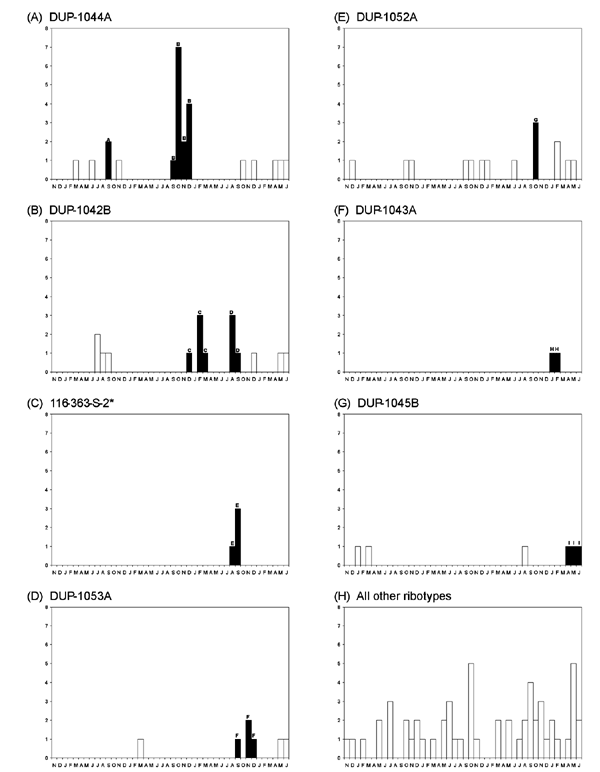Volume 9, Number 6—June 2003
Research
Molecular Subtyping To Detect Human Listeriosis Clusters
Figure 2

Figure 2. Temporal distribution of listeriosis clusters detected based on ribotype or pulsed-field gel electrophoresis (PFGE) data, using a 3-month window scan statistic. Panels A–G each show the distribution of cases caused by a specific ribotype; ribotypes are denoted in the header of each panel. For panel C, one case caused by ribotype DUP-1044B is included with cases caused by ribotype 116-363-S-2 based on a PFGE match ([[ANCHOR###T1###Table 1###Anchor]], cluster E). Cases, which are part of statistically significant ribotype or PFGE clusters, are denoted by dark bars and labeled by cluster designation (A–I, see [[ANCHOR###T1###Table 1###Anchor]]). Open bars indicate cases that were not part of a cluster detected by the scan statistics. Panel H shows human cases, which did not represent clusters and were not caused by any of the ribotypes shown in panels A–G. The X-axis of each panel represents November 1996 to June 2000.